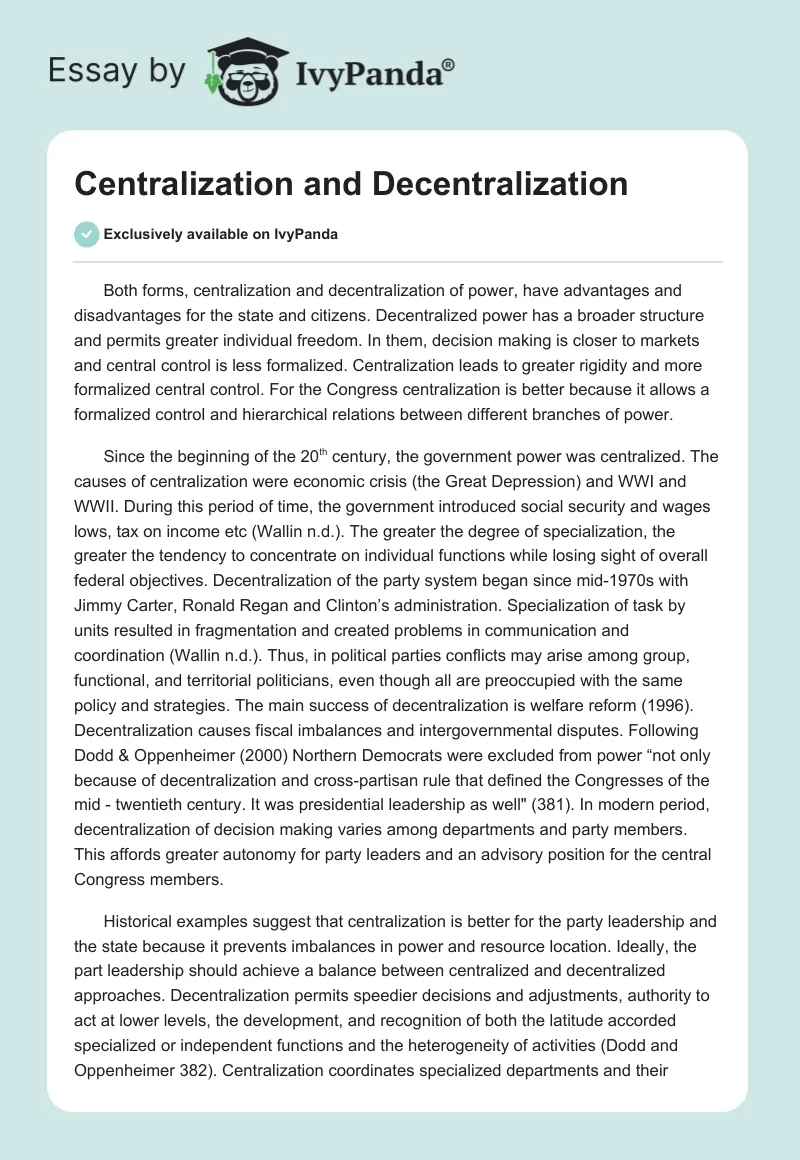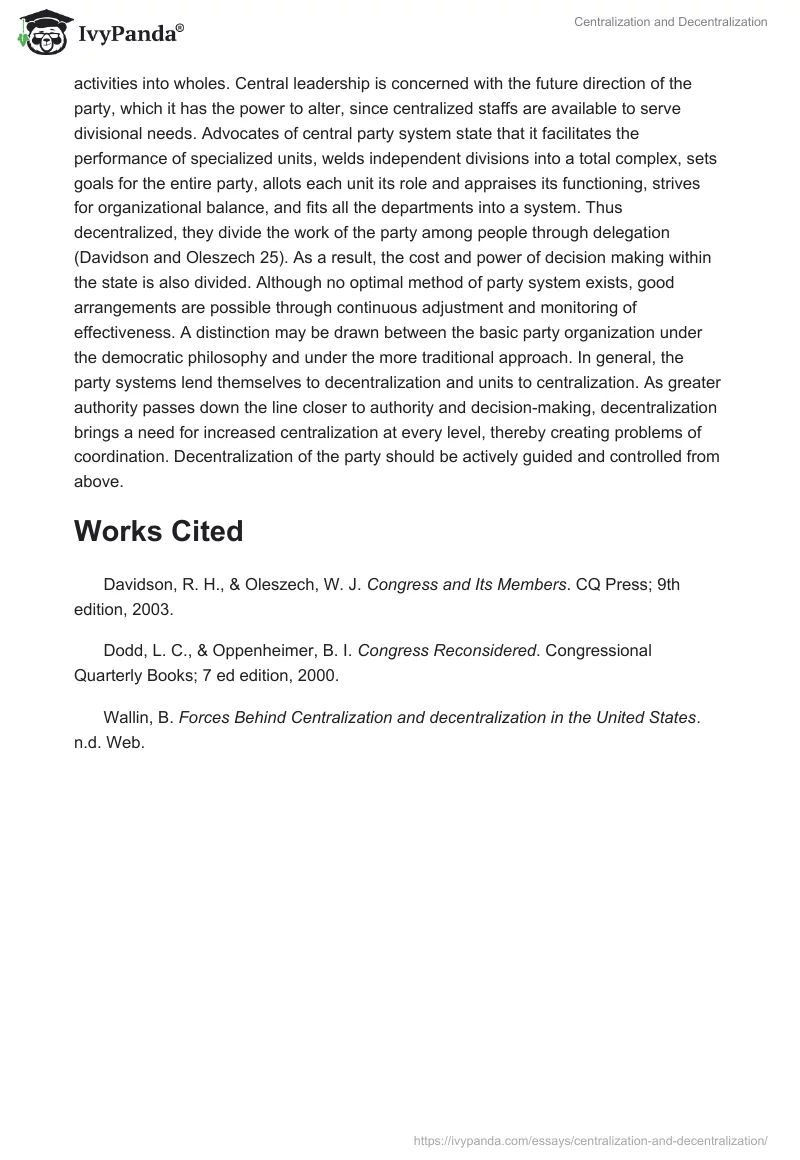Both forms, centralization and decentralization of power, have advantages and disadvantages for the state and citizens. Decentralized power has a broader structure and permits greater individual freedom. In them, decision making is closer to markets and central control is less formalized. Centralization leads to greater rigidity and more formalized central control. For the Congress centralization is better because it allows a formalized control and hierarchical relations between different branches of power.
Since the beginning of the 20th century, the government power was centralized. The causes of centralization were economic crisis (the Great Depression) and WWI and WWII. During this period of time, the government introduced social security and wages lows, tax on income etc (Wallin n.d.). The greater the degree of specialization, the greater the tendency to concentrate on individual functions while losing sight of overall federal objectives. Decentralization of the party system began since mid-1970s with Jimmy Carter, Ronald Regan and Clinton’s administration. Specialization of task by units resulted in fragmentation and created problems in communication and coordination (Wallin n.d.). Thus, in political parties conflicts may arise among group, functional, and territorial politicians, even though all are preoccupied with the same policy and strategies. The main success of decentralization is welfare reform (1996). Decentralization causes fiscal imbalances and intergovernmental disputes. Following Dodd & Oppenheimer (2000) Northern Democrats were excluded from power “not only because of decentralization and cross-partisan rule that defined the Congresses of the mid – twentieth century. It was presidential leadership as well” (381). In modern period, decentralization of decision making varies among departments and party members. This affords greater autonomy for party leaders and an advisory position for the central Congress members.
Historical examples suggest that centralization is better for the party leadership and the state because it prevents imbalances in power and resource location. Ideally, the part leadership should achieve a balance between centralized and decentralized approaches. Decentralization permits speedier decisions and adjustments, authority to act at lower levels, the development, and recognition of both the latitude accorded specialized or independent functions and the heterogeneity of activities (Dodd and Oppenheimer 382). Centralization coordinates specialized departments and their activities into wholes. Central leadership is concerned with the future direction of the party, which it has the power to alter, since centralized staffs are available to serve divisional needs. Advocates of central party system state that it facilitates the performance of specialized units, welds independent divisions into a total complex, sets goals for the entire party, allots each unit its role and appraises its functioning, strives for organizational balance, and fits all the departments into a system. Thus decentralized, they divide the work of the party among people through delegation (Davidson and Oleszech 25). As a result, the cost and power of decision making within the state is also divided. Although no optimal method of party system exists, good arrangements are possible through continuous adjustment and monitoring of effectiveness. A distinction may be drawn between the basic party organization under the democratic philosophy and under the more traditional approach. In general, the party systems lend themselves to decentralization and units to centralization. As greater authority passes down the line closer to authority and decision-making, decentralization brings a need for increased centralization at every level, thereby creating problems of coordination. Decentralization of the party should be actively guided and controlled from above.
Works Cited
Davidson, R. H., & Oleszech, W. J. Congress and Its Members. CQ Press; 9th edition, 2003.
Dodd, L. C., & Oppenheimer, B. I. Congress Reconsidered. Congressional Quarterly Books; 7 ed edition, 2000.
Wallin, B. Forces Behind Centralization and decentralization in the United States. n.d. Web.


